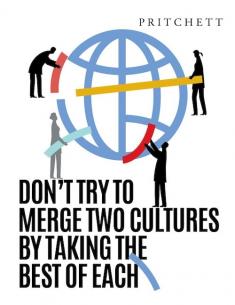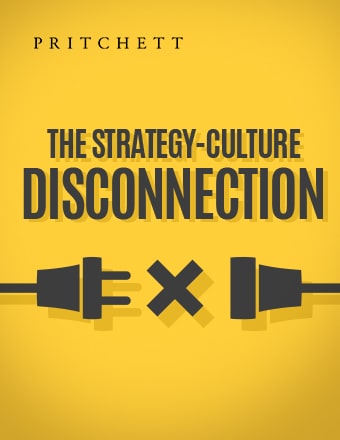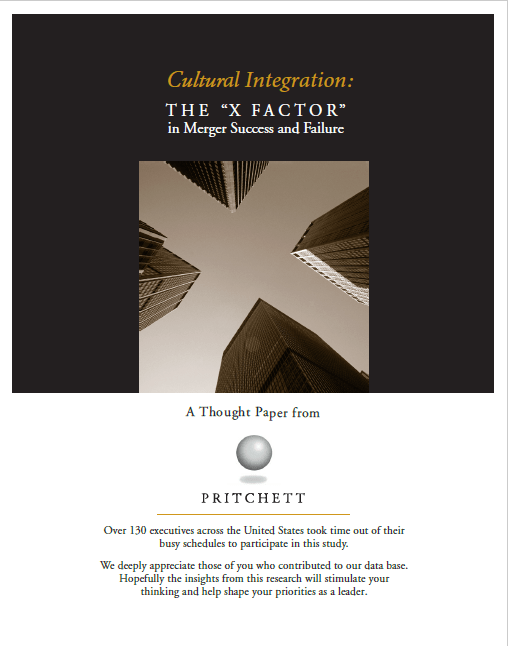One of the most common merger philosophies we hear goes like this: “We’re going to take our time, do it right, and form a new culture that represents the best of both worlds.”
That sounds good in theory, but it’s a high-risk proposition. Our experience is that companies almost never pull it off successfully.
It makes about as much sense as a man and woman who marry and announce that they plan to blend their two personalities into one. . . 50-50. . . at the same time that they’re trying to adjust to all the routine stresses and strains of married life. It’s a recipe for failure, whether you’re talking about a marriage or a merger.
The “best of both worlds” strategy for integrating cultures brings traumatic destabilization to both organizations. Managers in both companies end up struggling to manage an unfamiliar situation. They can’t necessarily draw on their previous successful experience as they wrestle with subtle and not-so-subtle ramifications of cultural shifts. Besides, after all is said and done, one of the two cultures virtually always comes out on top anyhow.
We recommend a much more pragmatic, business-oriented approach: integrate one company, not two. Usually the argument tilts in favor of going with the dominant or most financially successful culture. Be very clear and up front with everybody about your plan. This makes the merger far less of a jarring experience for the firm whose culture prevails. Furthermore, it actually permits an easier transition for people in the other organization as well, if you take the following steps:
- Pull no punches in explaining your integration strategy.
- Try to identify the key differences in the two “corporate personalities.
- Educate employees regarding what the new cultural realities will be.
No question, the people (from both organizations) need help if they are to understand how to operate comfortably within the confines of those cultural realities that will prevail. Otherwise it can take months for them to “break the code” and figure out how to handle themselves on the job.
We’re not suggesting that you shouldn’t come out of the merger with a better organization. Frankly, you should seize the window of opportunity the merger shakeup gives you to work toward a newer and better culture.
But remember—the key function of corporate culture is to bring stability to the organization, just as a key function of an individual’s personality is to bring stability to the person. So you must question the wisdom in deliberately tearing both cultures apart now when there are so many other new pressure points brought on by the integration.





